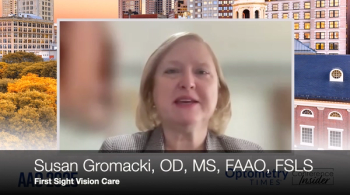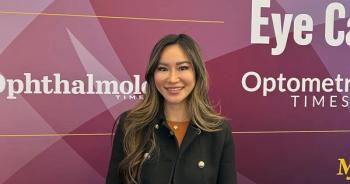
Treat digital eye strain with a comprehensive strategy and nutritional approach
Pinakin Davey, PhD, OD, FAAO, gives key highlights from his AAOpt 2022 presentation, "Management of digital eye strain: comprehensive strategy and nutritional approach."
Pinakin Davey, PhD, OD, FAAO, professor of optometry and Director of Clinical Research at Western University of Health Sciences, gives an overview of his presentation, "Management of digital eye strain: comprehensive strategy and nutritional approach," which he presented during the 2022 American Academy of Optometry meeting in San Diego
Editor's note: This transcript has been edited for clarity.
Hello, I'm Pinakin Davey, a professor of optometry and Director of Clinical Research at Western University of Health Sciences. It is my pleasure to talk about digital eye strain, a comprehensive strategy and a nutritional approach.
Digital eye strain affects millions of individuals. Almost everybody has experienced this during the COVID pandemic. The COVID-era pandemic workstyle is unlikely to change. We are surrounded by screens, computers, phones, tablets, iWatches.
Digital eye strain is a very complex syndrome because the computers were a constant, but today, the digital technology are bombarding us from all different angles. We have no constants. The working distance of a computer is different than a working distance of an iPad versus a smartphone. What's worse is that as time goes on, we use the technology--for example, an iPad or a smartphone--if you use it for about 10 minutes, we slowly decrease the working distance, putting a lot of strain on our visual system.
So digital eye strain is an outcome of the digital technology that surrounds us. But it's not restricted to eye problems. Patients often observe neck pain, back pain, shoulder pain, wrist pain, and all this is because of the amount of gadgets they utilize.
Now when considering the treatment strategy for digital eye strain, a comprehensive eye exam is a must, and fixing any accommodative vergence issues or phorias that we may actually not worry about in a regular patient is important to be corrected at first for your patient that is suffering from digital eye strain.
Commonly, patients that have digital eye strain complain of dry eyes, their blink patterns are affected. So discussing with them, the issues related to blinking, taking breaks, appropriate lubrication, when needed for the tears, or perhaps omega supplements will be appropriate for them. Discuss with your patients the lighting environment that they surround themselves with, and the appropriate position that they should be using these devices and seriously avoiding them prior to bedtime.
So now once we consider all this, the next question is how does nutrition play a role in [audio unclear] ameliorating these problems that the patients may face? A nutritional approach is very crucial because digital eye strain not only affects the eyes, but also affects your brain because of the visual overload and data suggests that there is a change in the cortisol state of your body and increase in numerous biomarkers, like tumor necrosis factor alpha inflammatory biomarkers, in the body.
There are studies that have shown that one could alter this by taking carotenoid vitamin supplement, and when you take a carotenoid vitamin supplement, you alter the amount of cortisol that's produced as a response to using digital devices.
The next question we would have is how do you manage a patient clinically? What level of supplements do we give them? What kind of supplements? So there are carotenoid vitamin supplements galore, but supplements that primarily have zeaxanthin and lutein are very crucial. These carotenoids deposit on your macula. So your vision improves, patient sees better, the contrast sensitivity is improved, the color functions improved. So you have a benefit due to that.
But the cortisol system is influenced due to carotenoids because the very carotenoids that we ingest as supplements or by eating fruits and vegetables get deposited in your adrenal glands, and that would change the amount of cortisol production.
So when a patient comes to us, we could actually give them about 12 to 13 milligram of carotenoids, of zeaxanthin and lutein primarily, and give that carotenoids for a period of about six months or so. You can measure the changes in their macular pigment optical density clinically, and in about six months patients will report comfort. This is not a quick fix; about six months or a year worth of management is very essential in taking care of the root problem of digital eye strain.
So when a person uses a digital device, they have strain in their system, and the eye exam or fixing appropriate refractively correction can actually fix that component and then the nutritional component can really add to the rest that cannot be fixed by optical technology.
Newsletter
Want more insights like this? Subscribe to Optometry Times and get clinical pearls and practice tips delivered straight to your inbox.



















































.png)


